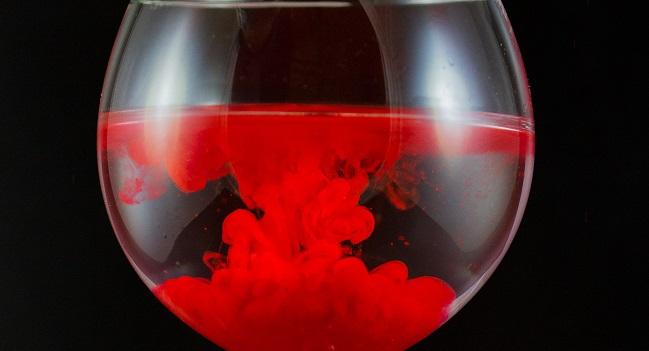Technique for Diluting the Blood During Primary PCI to Prevent Reperfusion Injury Seems Safe, Feasible
A straightforward, inexpensive approach to intracoronary hemodilution is possible, but outcomes studies are needed.

Intracoronary infusion of a room temperature solution during primary PCI achieves its goal of hemodilution safely, preliminary research suggests, but larger studies are required to show whether the approach can lessen reperfusion injury.
In 10 patients with STEMI, the technique resulted in a drop in intracoronary temperature by a median of 3.4°C, an indirect sign that hemodilution was successful, according to lead author Michael McGarvey, MD (Royal Brompton & Harefield NHS Foundation Trust, Harefield, England), and colleagues.
And the approach appeared safe, with no chest pain, hemodynamic instability, ST segment instability, or arrhythmia that the investigators considered to be related to hemodilution, they report in a study published recently online ahead of print in Catheterization & Cardiovascular Interventions.
But before there’s a clinical application, “there’s still a reasonable amount of work to be done,” McGarvey told TCTMD. “This is very much a very early, exploratory study.”
The investigators need to delve into the exact mechanisms at play, he said, noting that hemodilution could be modifying neutrophil or platelet composition, reducing viscosity of the blood, or reducing oxidative stress. Once the mechanisms are worked out, the protocol can be refined and larger studies to evaluate whether the strategy is reducing reperfusion injury can be performed, McGarvey said.
Reperfusion injury—which contributes up to 50% of the final infarct size—has been a vexing problem following revascularization, according to the authors, and preventive approaches that have seemed promising have not panned out in clinical studies.
McGarvey said his group became interested in hemodilution after initially beginning work on regionally cooling the heart by administering intracoronary crystalloid. They realized that by delivering a large volume of solution to cool the heart, they were also diluting the blood, so they set out to explore that concept further.
In this single-arm, single-center, pilot study that included nine men and one woman presenting with STEMI, McGarvey et al used a protocol for intracoronary hemodilution during primary PCI designed to both reduce costs and simplify the process by removing the need for additional equipment. The process involved delivering room-temperature Hartmann’s solution through the guide catheter, starting before the guidewire crossed the occluded artery and stopping 10 minutes after balloon angioplasty and stenting was completed. The infusion was stopped only during contrast injection and pressure measurements and if intracoronary temperature dropped below 30°C.
“I think what we didn’t want to do was to add extra guide catheters, extra infusion catheters, extra pumps—stuff that essentially would provide barriers to uptake,” McGarvey said. “We wanted to make something that was practical and feasible, and we wanted it to be suitable for widespread uptake if proven to be effective.”
Revascularization was successful in nine patients, with TIMI 3 flow achieved in eight. Microvascular obstruction was seen in 37.5% of patients, and complete ST-segment resolution was observed in 70%. Median myocardial salvage index was 0.54.
In terms of clinical outcomes, one patient died after developing heart failure and cardiogenic shock following primary PCI; McGarvey said that the team felt that the experimental protocol was not a contributing factor. Another patient had a bout of ventricular fibrillation before the infusion was started. All other patients were discharged free from significant clinical events.
In addition to mechanisms, there are other issues that still need to be worked out.
“Whilst our measurement of intracoronary temperature change is a useful indirect measure of hemodilution, we cannot confirm a significant regional change in blood composition, pH, oxygen-carrying capacity, plasma viscosity, or myocardial temperature,” they write. “Furthermore, this pilot study used Hartmann’s solution, which has been used extensively in the field of therapeutic hypothermia, but other perfusate agents, including those enriched with vasoactive drugs, were not examined at this point.”
Todd Neale is the Associate News Editor for TCTMD and a Senior Medical Journalist. He got his start in journalism at …
Read Full BioSources
McGarvey M, Ali O, Iqbal MB, et al. A feasibility and safety study of intracoronary hemodilution during primary coronary angioplasty in order to reduce reperfusion injury in myocardial infarction. Catheter Cardiovasc Interv. 2017;Epub ahead of print.
Disclosures
- The study was funded by the National Institute for Health Research Cardiovascular Biomedical Research Unit of Royal Brompton & Harefield NHS Foundation Trust.
- McGarvey reports no relevant conflicts of interest.


Comments